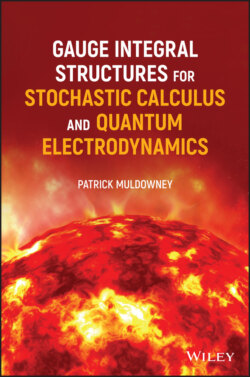Читать книгу Gauge Integral Structures for Stochastic Calculus and Quantum Electrodynamics - Patrick Muldowney - Страница 25
Example 6
ОглавлениеExpression (2.5) above gives two representations of a stochastic integral,
based on sample value calculations (2.4:
(2.10)
derived from (2.2) and (2.3):
If and are to be treated as functions of a continuous variable for , this suggests calculations or estimates on the lines of
(2.11)
where is a partition of .
For Example 5 the sample calculation (2.4) of total portfolio value leads unproblematically to the random variable representation (2.5), . Though we have not yet settled on a meaning for stochastic integral, the discrete expression
points towards as a continuous variable form of stochastic integral. It seems that the sample value form of the latter should be the Riemann‐Stieltjes integral , for which a Riemann sum estimate is
(2.12)
where for .
But (2.11) has , not the of (2.12). The logic of Example 5 indicates that only the left hand value is permitted in the Riemann sum estimates of the stochastic integral . Why is this?
The issue is to choose between two forms of Riemann sum:
The latter corresponds to the calculation
of Example 5, where is used, but not or any value intermediate between and .
The reasoning is as follows. At time the investor makes a policy decision to purchase a quantity of shares whose value from time up to (but not including) time is . This number of shares (the portfolio) is retained up to time . At that instant of time the decision cycle is repeated, and the investor adjusts the portfolio by taking a position of holding number of shares, each of which has the new value .
In the time period to , the gain in value of the portfolio level chosen at time is
not , since the portfolio quantity operates in the time period to (not to ). Reverting to continuous form, this translates to Riemann sum terms of the form
